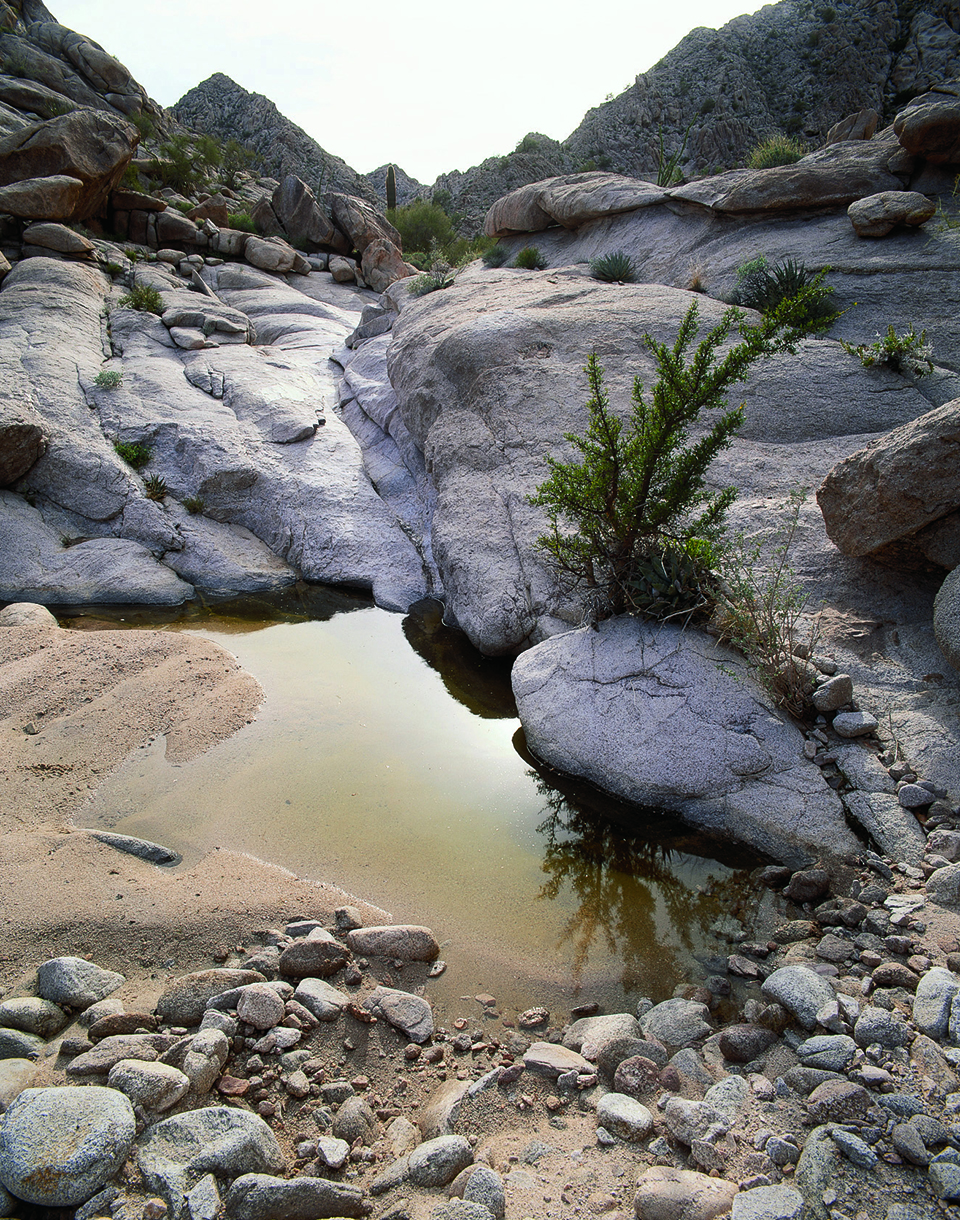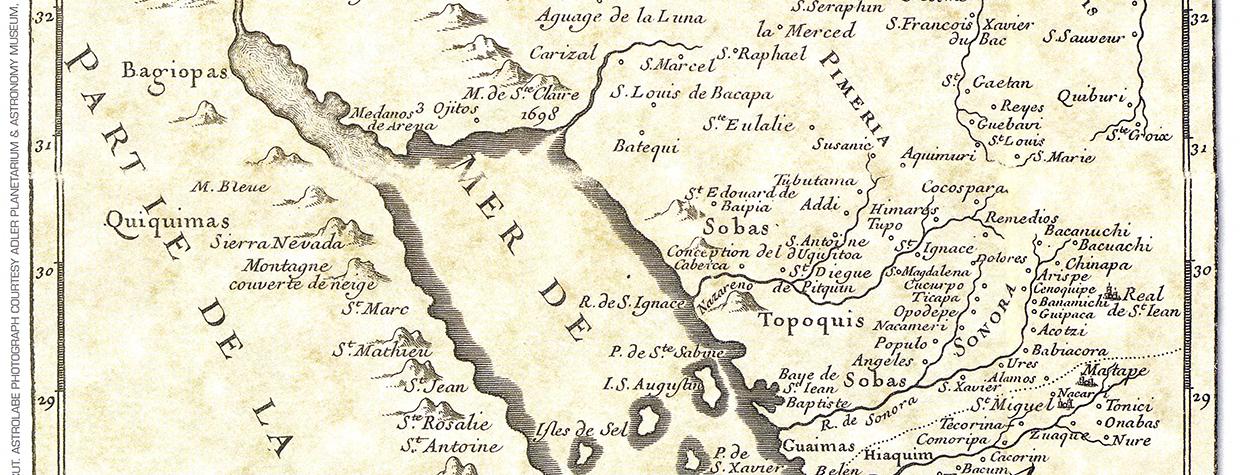
MY INTEREST IN FATHER KINO CAME FROM A PROJECT I PERFORMED FOR THE U.S. FISH AND WILDLIFE SERVICE WHILE WORKING ON A MASTER'S THESIS IN DESERT STUDIES. FOR 37 DAYS, I WALKED THROUGH THE CABEZA PRIETA NATIONAL WILDLIFE REFUGE, ONTO CATHEDRAL desert peaks made of white-quartz granite, looking for water holes. Those holes, called tinajas, are rare and well-hidden among canyons and pinnacles. Natural cisterns, they sometimes hold thousands of gallons of rainwater.
My assignment called for me to map these tinajas, to venture into the cracks of the Cabeza Prieta with a global positioning device, marking the latitude and longitude of each water source, recording the volume of water and then the array of invertebrates living there.
The first map of tinajas I found, and one of the most useful, was the elegantly drawn work of Father Eusebio Francisco Kino, a 17th-century Jesuit missionary-explorer. It was rendered to paper in 1701, and nearly 300 years later I carried a copy of it with my gear, unfolding it across the sand as I rested in the shade of ironwood trees. The side borders of the map were divided into strikingly accurate scales of longitude. Kinas handwriting was clean, each word given mindful strokes; his serifs not too bold, yet not obscured.
In this particular area, he marked and named La Tinaja ("the jar"), Agua Escondida ("hidden water"), and Aguaje de. la Luna ("watering place of the moon").
I drew my fingers over those places, those great swaths ofland stitched together by nothing but water holes and the tracks of Father Kina as he sought one tinaja and then the next.
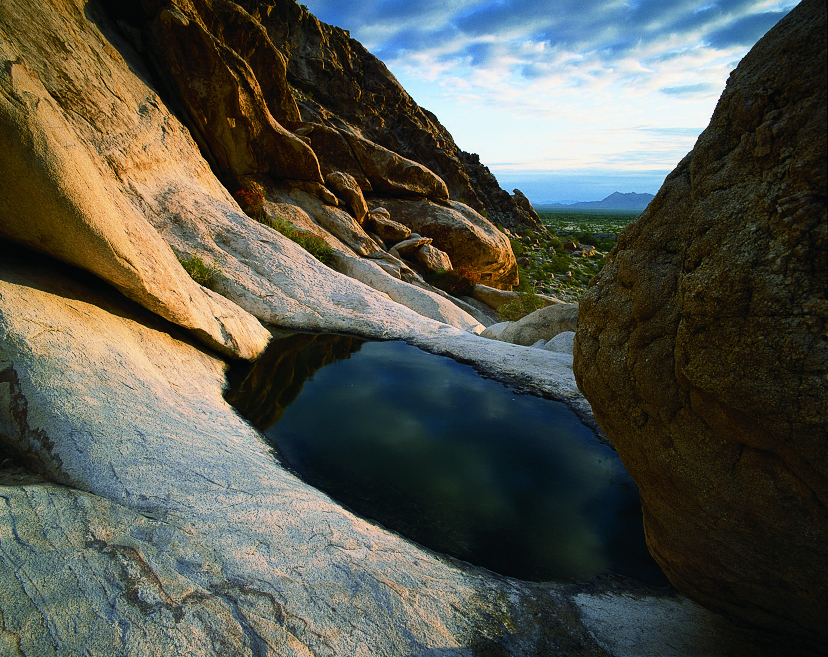
THE DESERT IS A PLACE to carry only what you need and no more. Across the vast Sonoran expanse, Father Kina brought few items. He was not a minimalist. He was, rather, an essentialist. He carried the basic gear of survival: a wool blanket, canteens, and devices for fire starting. His black robe he kept folded in a leather saddlebag, reserved for formal encounters. Items for trading, such as rosary beads and metal knife blades, also went into the saddlebags. There were devotional necessities, including a chalice, a gourd of wine, and bread and water for Mass, which was performed on the desert floor each morning. A crucifix, probably made of brass and inlaid with a wooden corpus, hung around his neck.
Belongings of most interest to this story were his telescope — small enough to be kept handy — his field notes, and his astrolabe for studying the stars. He would withdraw the astrolabe in the evening, measuring with it the angle between the horizon and certain celestial bodies. Then he wrote the measurements in his notes, adding coordinates day after day for hundreds of days across the desert.
During the sunlight hours, he would dismount his horse on the smooth, endless bajadas, and with his telescope scan the distant mountain ranges, which looked like the masts of tall ships just past the horizon. His knowledge of the landscape owhat is now southwestern Arizona and northwestern Mexico grew much each day.
When, in 1678, Kino was first sent to this place, a little known region called Pimeria Alta , he had no desire to be there. He had studied cartography, mathematics, and cosmology with the hope of serving in the Orient. Jesuit mathematicians were said to be of much use in the Chinese court.
During his scholarly studies, he made his geographic interests known through letters to the Father General. When his assignment came, it was to be either the Philippines or New Spain, what is now known as Mexico. He drew lots with another padre, and did not draw the Philippines.
Disappointed, he pressed for an assignment change, sending entreating letters to the Duchess of Aveiro y Arcos, a patroness of Jesuit missions in the Orient. Even after arriving in Mexico, he sought to join a missionary entourage bound for the East, but his pleas were fruitless.
At the age of 36, Kina , a scholar who had studied under premier Renaissance cosmographers, arrived in a rugged desert that had yet to be mapped.
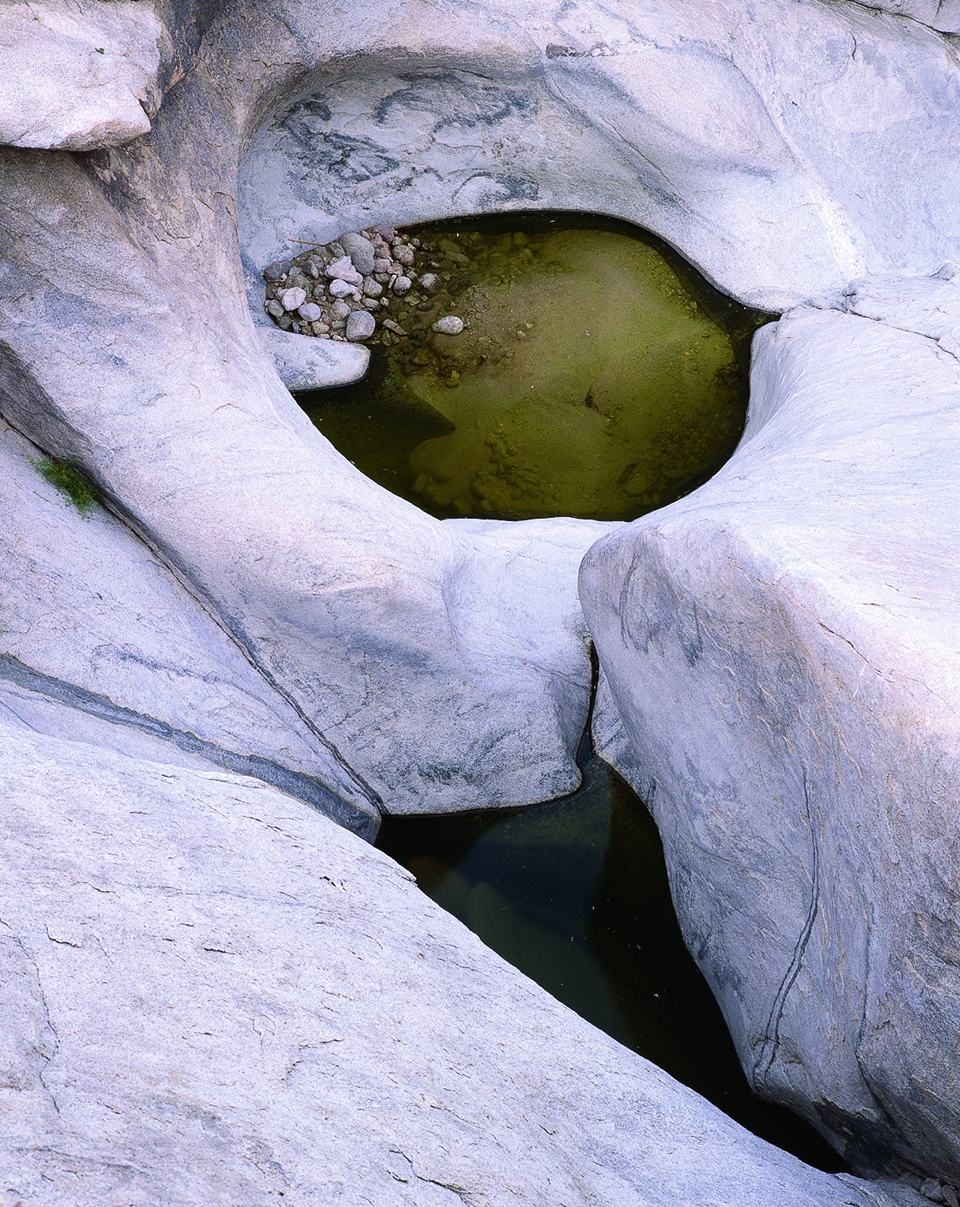
AS I SEARCHED FOR TINAJAS among boulders and deep canyons, I contemplated Kinas own odyssey. I read his notes, which first surfaced early this century when a researcher acquired them from a Mexico City library From them, I retraced his steps through the Cabeza Prieta, southeast of Yuma.
His routes there parallel a pathway now known as El Camino del Diablo, "the devil's highway," strewn with countless stories of death, and with graves scattered among mountain ranges.
In this land, I studied Kino's record, making computations on how long it took him to get from Aguaje de la Luna to Agua Escondida, what time of the day he took a siesta, andhow many more hours he spent in motion. I read of his arrival at Aguaje de la Luna before it was named, how in the light of the full moon he climbed through sharpened rocks until stumbling across this massive tinaja.
During his 24 years in this country, Kina made more than 50 entradas, journeys of between 100 and 1,000 miles. On each entrada, he kept prudent notes and ritually employed his astrolabe to place the land onto a map. Hidden in his notes lurks a peculiar fascination with this desert. I take a risk in saying this, but I came to believe that his personal mission here was not the conconversion of the indigenous people but to understand a place he had, originally, never wanted to see. His last thoughts before sleep under the powdering of desert stars may have been not of heaven but of the extent of the dry and embittered Pimeria Alta.
Kino brought to Pimeria Alta a yearning to know, a thirst that his teacher, the famed cosmologist Athanasius Kircher, had undoubtedly helped along. Instead of continuing his scholarly and esoteric work in the Chinese court, Kina faced the distressing but visually enchanting landscape of the Sonoran Desert.
Instead of rebelling against it, he was swallowed by it. He learned how to manage livestock during drought and how to find water for himself. His humble, pleading letters to the Duchess of Aveiro y Arcos ceased.
No other skyline is as raw and laid bare as this. Kino must have seen here each of the elements that Kircher had so diligently tried to express. The fires of Earth, the shimmering air above, and the sweet, rare peace of water.
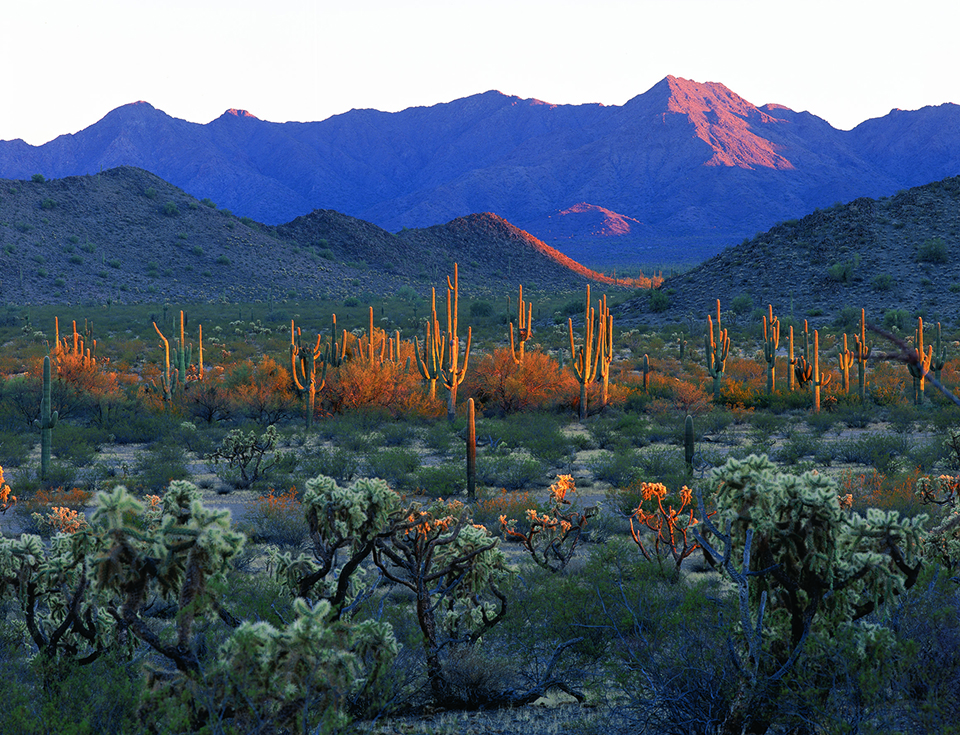
Kino was the first to proclaim California not an island but a seamless part of North America. Usually this type of mapping was done from ships that followed coastlines. Kino did it from the ground, traveling across the desert and inquiring of those he converted. His curiosity grew markedly from month to month, as he sought ways to show that California was an uninterrupted segment of this desert.
Kino's legendary generosity played a key role in his quest. He commonly offered gifts to the Indians, sometimes even his personal belongings. He often gave livestock along with instructions on how to care for the creatures. In return for his gifts, a group ofYuman Indians gave him some blue shells. Kino admired the gifts, writing that they were "curious and beautiful blue shells, which, so far as I know, are found only on the opposite, or western coast of California." The shells set him to thinking about a passage to that far coast, and he wrote that "shortly, by Divine Grace, we shall try to find it out and see it with all exactness."
Later the Cocomaricopa Indians offered Kino a holy cross laced with a string of 20 blue shells, the same kind of shells he'd received from the Yumans. So Kino gathered members of nearby tribes, inquiring about the origin of the shells and the extent of the land. He conducted talks late into the night. In those long discussions, Kino informed the people about Christianity, as was his duty, but he seemed to concentrate more on interests geographic.
He wrote, "I made further and further inquiries as to whence came the blue shells, and all asserted that there were none in the nearest sea of California, but that they come from other lands more remote."
His search for those other lands more remote took him across the Cabeza Prieta numerous times until he had proved that a person could walk to California. The crossings required a specialized knowledge of tinajas, so Kino traveled under the tutelage of indigenous guides. As he was led to the various tinajas, he marked them on his map. They would become the lifeline for people traveling between what is now Mexico and California.

After Kino, though, this lifeline became less known. His map went unused. Hundreds upon hundreds of people perished trying to cross to the California goldfields. The lack of water led to those delirious deaths , but water was there all along. La Tinaja and Agua Escondida were often full to their edges while people died in the desert beyond.
From reading Kinos words, I came to know him as a patient and deliberate man. Each day he celebrated Mass. His calibration of the astrolabe required diligence and a steady hand. He studied the horizon many times a day with his telescope, reading the distant mountain ranges. Kino did not rush to cross Cabeza Prieta because his questions could not be answered quickly, but only with judicious observation.
Upon reaching a tinaja I believe Kino had located, I steadied my hand on the tape measure, thinking back some 300 years to when the Jesuit arrived there. I slowed my breathing and measured the smooth disk of water, water so pleasing that days could be spent just staring at it.
The tinaja measured slightly more than 15 feet across at its widest point. I imagined Kino's eyes, his posture, his thirst to understand this land. From my pack I retrieved my global positioning device, turned it on, and waited for it to gather signals from satellites that passed against the stars. The display gave coordinates: North 32° 18' 51.2" West 113° 48'.
I recorded this in my notes, then out of my palm drank water from the tinaja that had once kept Kino alive.
Craig Childs can usually be found outdoors. This trek was part of his master's thesis on the natural history of water in American deserts. He cautions would-be visitors to the harsh Cabeza Prieta that water holes are difficult to locate.
